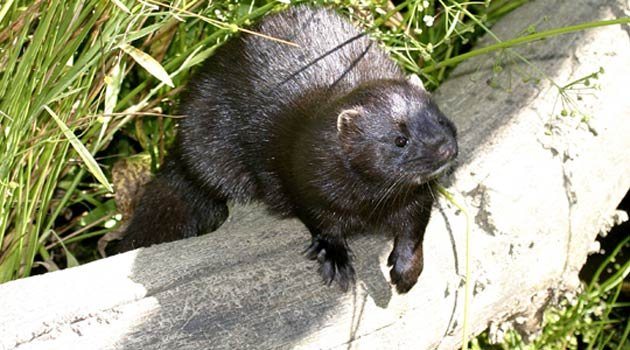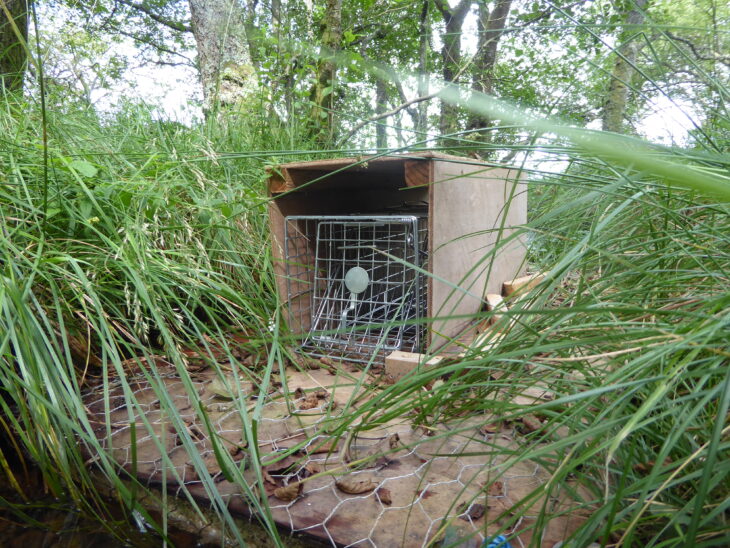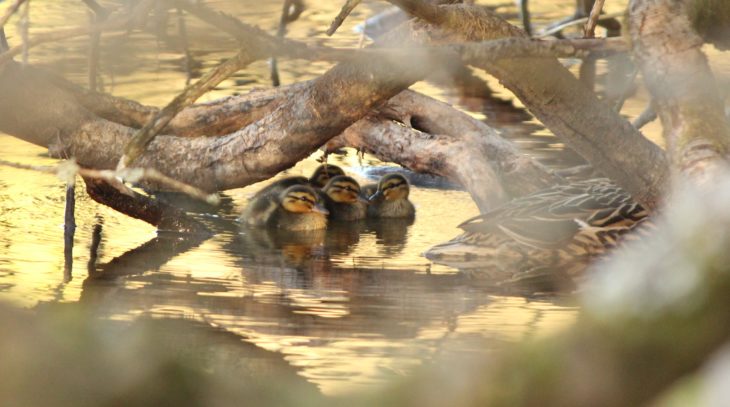Controlling American mink at Loch of the Lowes
What does 20th Century fashion have to do with wildlife conservation at Loch of the Lowes? Meet the American mink (Neovison vison):

Mink are semi-aquatic predators from the mustelid family, the same group of animals as otters and pine martens. The mink’s coat, or more precisely, human’s desire to wear it, led to this non-native species being introduced to fur farms in the UK from North America in 1929.
Mink are incredibly agile creatures and so it isn’t surprising that many animals escaped from fur farms across the UK and became established as a breeding feral population. These escapes are often been ascribed to releases by animal rights activists in the 1990’s, but it is now believed that they found their way into the wild much earlier, starting in the 1930s. The first officially confirmed instance of mink breeding in the wild came in 1956.
American mink have spread through British rivers and are now widespread throughout the UK, with the exception of the far north of Scotland and some Scottish islands.
A significant threat to our native species
Mink are voracious and opportunistic predators that eat a wide range of prey, including ground nesting birds, eggs, amphibians, voles, fish and crustaceans. Really, anything that they are able to catch.
A cog from the wrong machine, mink have no natural predators in the UK’s ecosystems and as they are not dependent on one food source, their numbers are able to continue growing even as they decimate different prey populations.
Consequently mink pose a significant threat to a wide range of our native species and have been credited with the disappearance of moorhen from the islands of Lewis and Harris in the Hebrides, as well as a drastic decline in water vole populations across the UK.
What are we doing about mink?
Unfortunately, in May this year, a mink was sighted via our beavercam at Loch of the Lowes dragging a duck through the water.
In response, four mink raft traps have been laid around the loch as part of the Scottish Invasive Species Initiative’s (SISI’s) Mink Control Project. This project aims to both drive mink numbers down as low as possible across a large area of Scotland, and prevent them spreading to currently mink-free areas further north.

How do mink traps work?
A mink raft consists of a floating platform positioned on the edge of a water body with a live trap on top, covered by a wooden tunnel. Mink are curious creatures and as they often feed on burrowing animals, they will investigate the tunnel without any need for bait, triggering the trap on their entry.
The project uses live traps, meaning the individual is caught but not killed by the trap, so that any by-catch, such as a curious duckling or water vole can be freed. The rafts are checked daily so that any animal caught is not trapped for too long. Once a mink has been successfully trapped, trained dispatchers from SISI are called in to kill it humanely, a necessary but nonetheless unenviable task.
We caught our first mink on Tuesday 30 July, a young female in good condition, indicating that she had been feeding well. Reassuringly, she hadn’t bred this season. Mink can have up to around eight kits that begin hunting independently after only a couple of months. The quick removal of this individual before she reproduced will hopefully have made a big impact for the protection of native species around the loch, and in the wider river catchment.

The fact that this female had not bred is also encouraging because it may indicate that there are not many males in the area. Hopefully, this means we can control the local population before it significantly damages the wildlife on the reserve.
So there you have it. Decades on from the start of the fur farms that brought them here, conservationists and volunteers across the country are working to protect our native species from the beautiful but deadly, American mink.
How you can help
If you spot American mink in your local area or would like to help protect native species around our waterways, you can get in touch with the Scottish Invasive Species Initiative via their website.
Josie Gibberd – Assistant Ranger
Help protect Scotland’s wildlife
Our work to save Scotland’s wildlife is made possible thanks to the generosity of our members and supporters.
Join today from just £3 a month to help protect the species you love.
Preface
What does 20th Century fashion have to do with wildlife conservation at Loch of the Lowes? Meet the American mink (Neovison vison): Mink are semi-aquatic predators from the mustelid family, …
